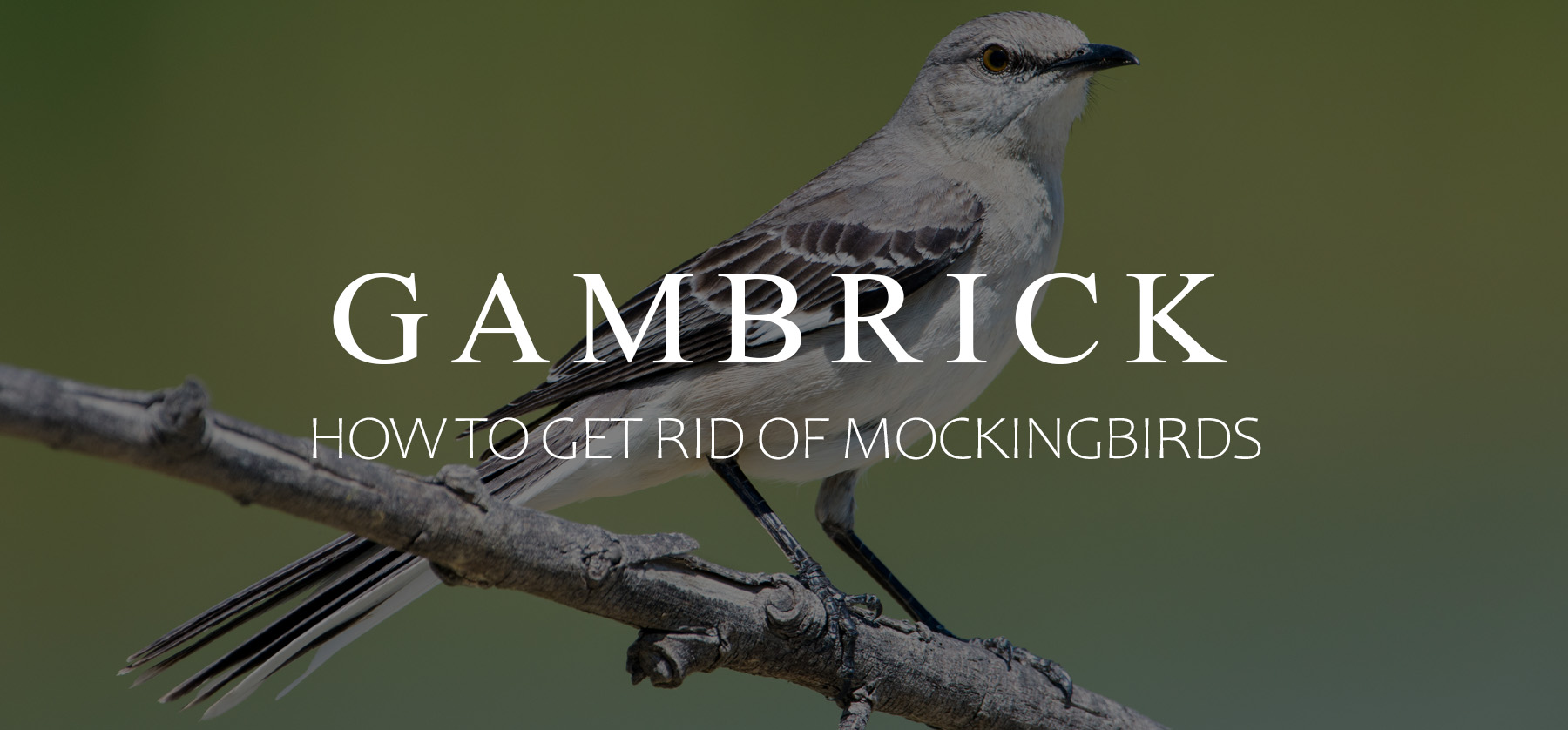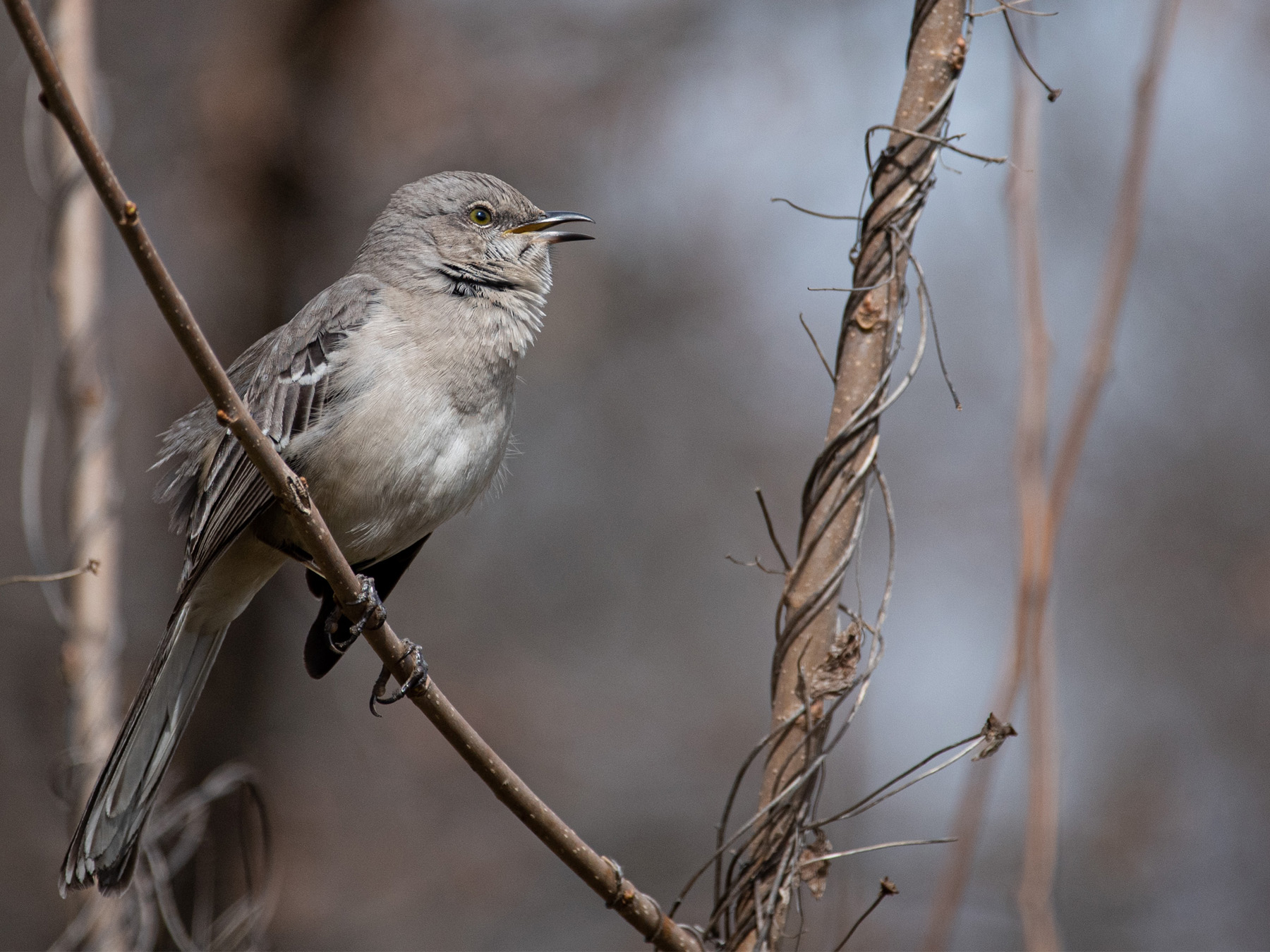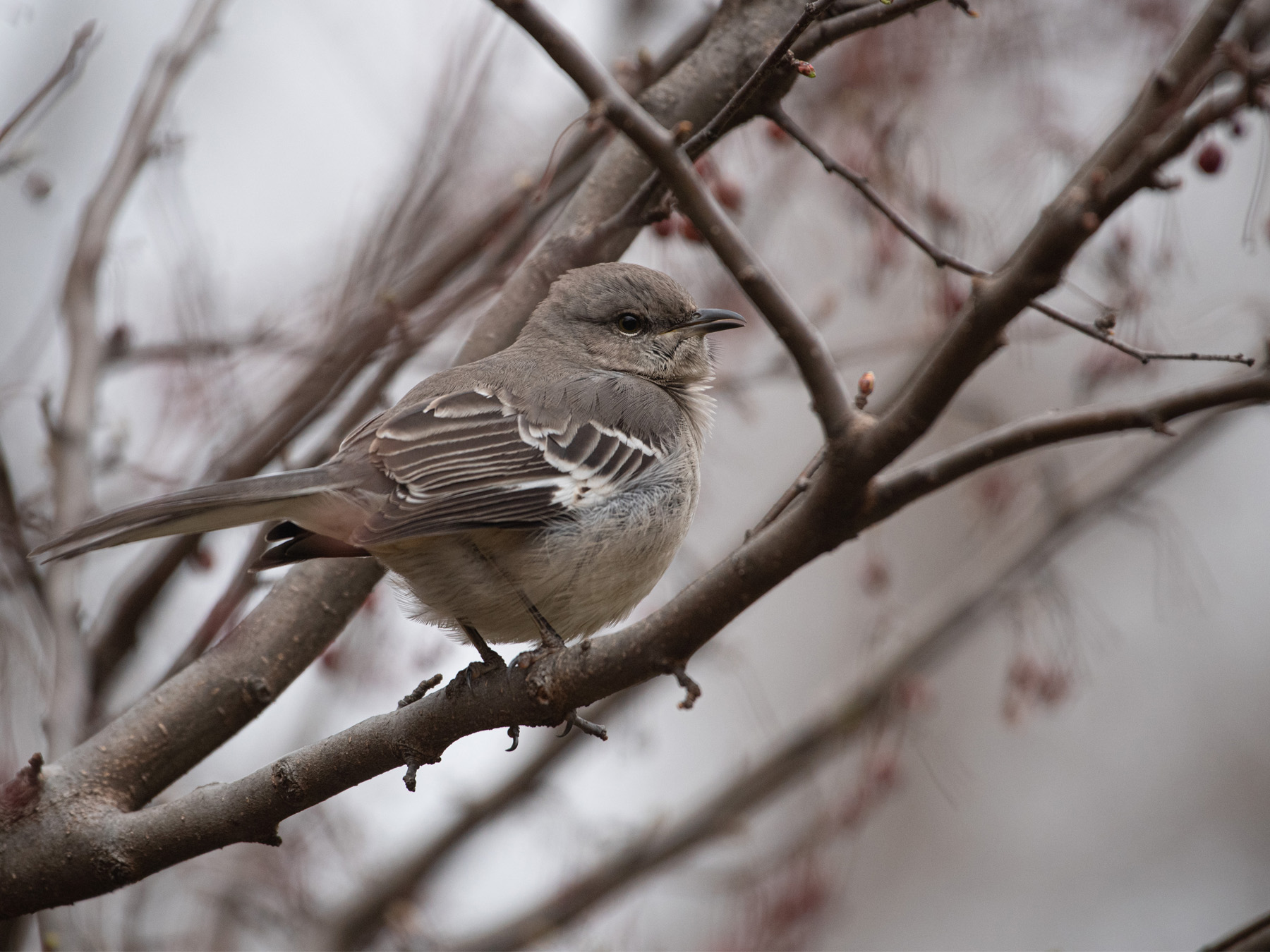How To Get Rid Of Mockingbirds
Mockingbirds are a small grey bird about 10 inches long that lives across the United States. They’re well know for having high intelligence and the ability to mimic the sounds of other animals, birds and odd things like sirens. They’re generally pleasant to have around because of how they sing but can get annoying because of the constant noise they make. They can get quite aggressive and territorial during mating season which can be a threat to small children and animals. Mockingbirds will attack other wildlife, humans, and pets when they feel threatened. The best way to get rid of mockingbirds is by scaring them. The owl and hawk are natural predators of mockingbirds and they know to stay away from them. A well placed owl or hawk decoy will keep mockingbirds far away from the area.
Another way to keep mockingbirds off your property is by starving them out. They generally look for food in the immediate surrounds area and feed on bugs and fruit. If you spray the area for pests and don’t grow fruit it’s unlikely they’ll nest in your trees.
Pruning is another way to get rid of mockingbirds. Once they find an area to nest in they look for small twigs and branches to build the nest. By raking your yard free of any small branches that fall you’ll make it very hard for them to live. They’ll generally move on to areas where it’s easier to nest.
One thing you can’t do is outright kill them. They’re protected under many individual state laws and the federal Migratory Bird Treaty Act of 1918.
Mockingbirds Are Protected
Although mockingbirds can be annoying and a nuisance to have in the yard, you can’t outright kill them.
In most areas killing a mockingbird is illegal. Native birds, like mockingbirds, are protected by many individual state laws and the federal Migratory Bird Treaty Act of 1918. The act makes it illegal to kill, harm, or relocate the birds, their nests, their babies or their eggs without a permit.
It’s also illegal to trap and cage them. So you can’t keep one as a pet.
It’s also against federal law to harass or harm them in any way while they’re nesting and raising young. So dealing with them takes proper timing. Once they start mating and nesting, you can’t bother them until after their babies have left the nest. Then you can use non-lethal ways to get rid of them.
The fine for killing any migratory bird in the United States, which includes the Northern Mockingbird, is up to $500 or up to six months imprisonment.
The Right Time To Deal With Mockingbirds
Timing is very important when you deal with mockingbirds. They’re a protected by many individual state laws and the federal Migratory Bird Treaty Act of 1918 so you can’t kill, harm or relocate the birds, their nests, their babies or their eggs without a permit.
You are allowed to use non-lethal ways to get rid of them but not while they’re mating or nesting. Once they start to mate or hatch eggs you can’t do anything to them until the babies leave the nest. Once that happens a window of opportunity opens where you can try to deal with them.
Here are some general time-frames you need to know:
- Male mockingbirds begin establishing their territories in February when they start seeking a mates.
- Breeding occurs from April through July, but it can run from January through August.
- Nest building, egg incubation, and fledgling cycles run 23 to 25 days.
- Birds lay up to six eggs, two to three times each season.
- Chicks leave the nest just 12 days after hatching.
The best time to try and get rid of mockingbirds is during the 4-6 month cold period when they’re not nesting. Once February comes it’s harder to deal with them legally. And once breeding starts in April there’s no way to get rid of them without facing a penalty.
Scare Them Away
The best way to get rid of mockingbirds is to scare them away. Owls and hawks are natural predators of the mockingbird so they know to stay away from them. A mockingbird won’t nest anywhere near an owl or hawk because they’ll be hunted and killed.
Purchase a few owl or hawk decoys and place them in the area where mockingbirds nest. Some decoys move, light up and make sounds which makes them even more effective at scaring away the birds. This is very helpful when scaring mockingbirds because they’re very intelligent.
You can also make cardboard cutouts of the predators and place them throughout the area. Just seeing the shape of a hawk or an owl is usually enough to scare away a mockingbird.
Mockingbirds are very scared of hawks and owls which is why decoys are so effective. But mockingbirds are very smart and may realize they’re fakes if they stay in one place all the time. This is why decoys that make sounds, move and light up work so well. If your decoys are stationary try moving them around the yard every day or so. This will make them seem more lifelike.
What Preys On Mockingbirds
Mockingbirds have a few natural predators that they fear based on where they live. These include snakes, owls, hawks, blue jays, alligators, and raccoons.
This can help you get rid of them because they won;t nest anywhere near a predator. Trick them into thinking predators live in the area by using scary sounds and a hawk or owl decoy. The decoys that light up, make sounds and move are a little more expansive but very effective.
Get Rid Of Mockingbirds By Starving Them
A great way to get rid of mockingbirds is by removing their reasons for being there. While it’s illegal to harm or kill mockingbirds at any time, it’s legal to deter them as long as they’re not mating, nesting, or rearing their young. Otherwise, you’re free to get rid of mockingbirds using any nonlethal means.
Mockingbirds generally nest in areas where they can readily find food. They don’t like to fly too far away from the nest because there’s a greater chance of coming across a predator. So they prefer for food to be close by.
One of the best ways to get rid of mockingbirds is to cut off their food supply. They mainly eat insects and fruit in the summer so pest control is very important if you want to reduce their food supply.
In fall mockingbirds switch to eating primarily fruit. Pick fresh fruit from your trees and bushes and don’t let fallen fruits remain on the ground for too long. Cover fruiting plants with bird netting to keep mockingbirds off the fruits as they ripen.
Mockingbirds like to eat the following foods:
- Small insects like beetles, earthworms, moths, butterflies, and bees
- Seeds
- Berries
- Fruits
Install repellents around fruit trees like owl or hawk decoys or lights and sound emitters.
Remember, you can’t do these things once the birds nest in your yard or have babies. These methods should be done before mating season to prevent them from building a nest. If there are deterrents in the area and scarce amounts of food they’ll usually move to a better location.
Limit Their Water Supply
Mockingbirds like to nest near a fresh water supply. Another way to deter them from building a nest in your yard is by removing water. Dry up any standing water on the property, remove or disable bird baths and empty anything containing water where they can drink or bathe.
Clean Up The Yard
A great way to discourage mockingbirds from nesting in your yard is by cleaning up brush, sticks and branches. Trim and prune all your trees, shrubs and bushes. Mockingbirds need lots of lose small branches to build a nest out of and prefer living in areas with lots of low cover for them to hide in.
You should also rake up grass clippings as soon as you mow the lawn because they like to use grass as a bedding material.
Mockingbirds settle down in an area every year to build a nest and lay eggs. If you deprive the area of food, water and nest building material they’re more likely to nest somewhere else.
Annoy Them
Mockingbirds don’t like bright lights and scary sounds at night. Both are a good way to scare them out of your yard.
Motion lights that come on in areas they like to nest is a good way to keep them off your property. Pare lights with predatory sounds from a hawk or owl to really deter them.
Ultrasonic devices detect the birds as they fly in range and can be programmed to light up and/or make noise. Place them in areas where mockingbirds are most likely to build a nest or where they feed. Once the bird comes in range the lights and sounds come on to scare them off.
I’ve found these devices to be more effective if you install them in the trees where mockingbirds build a nest rather than on the ground. This is because the predators mockingbirds are most afraid of, hawks and owls, attack from the sky and not the ground.
Some bird repellents will even shoot water at the birds when they detect them. These can work if your fruit trees or berry bushes are low but don’t work as well up high.
As with decoys, move the light and sound emitters from time to time. Mockingbirds are smart birds and will remember where the deterrents are.
Ultrasonic Bird Deterrents
Ultrasonic bird deterrents are illegal to use if a mockingbird is already nesting on your property. However you can use them before the mating season starts to prevent them from building a nest in your yard.
Ultrasonic deterrent devices work pretty well when you’re trying to keep birds away. Many farmers use them to protect their crops from all sorts of migrating birds.
Luckily these devices are reasonably priced and very easy to use. They’re solar powered with a battery and fairly small. Place them in areas where mockingbirds are most likely to build a nest. When the mockingbird approaches the ultrasonic device will activate and scare the bird away. Once this happens a few times they generally don’t come back.
Mockingbirds Can Be Aggressive
Be careful when you have mockingbirds in your yard because they can be aggressive and territorial. Especially when they have eggs or baby birds in the nest.
They’re good at identifying things that pose a threat to them and their babies and have an aggressive personality. If you go near them and they feel threatened they won’t always fly away like most birds. Mockingbirds have an instinct to attack immediate threats to protect themselves.
If you approach a mockingbird in a threatening way they may attack you. The same thing can happen to dogs and other pets living in the yard.
If you see a mockingbird in the yard its best not to go near it.
Getting attacked by a mockingbird is unlikely to kill you but it does hurt. They’ll pick and bite you with their beak and have a tendency to attack the face.
When you see a mockingbird consider it a threat and stay away from it. Deal with them from afar with deterrents they’re scared of like hawk and owl decoys, lights and sounds. And make the yard harder for them to nest in by restricting food, water and nesting materials.
Mockingbirds Are Territorial
The majority of mockingbirds are year round residents and do not migrate. This is according to the Birds of Stanford division of Stanford University. However, some northern mockingbirds do migrate to survive the colder months. Particularly those that live in northern regions that get cold in Winter.
The migration period gives you a perfect opportunity to set up deterrents before they return.
Mockingbirds are territorial and are aggressive when threatened. If one is living in your yard year round, set up your deterrents when you see them fly away. But be quick about it. If they see you poking around their nest they can be aggressive.
Mockingbirds are an intelligent bird and remember where they nest. When they return from migration they’ll go back to the area where they previously nested and will usually build a nest in the exact same spot each year. Since you know where the nest is it’ll be easy to set up deterrents while they’re away. A well placed owl or hawk decoy will usually scare them away from the yard.
Even though mockingbirds are territorial, they still need food, water and materials to build and repair their nest. And they won;t go anywhere near predators. By understanding their behavior, needs and fears it’s not that hard to get rid of them.
Final Thoughts
Be persistent and patient with your efforts to get rid of your mockingbirds. The key to successfully preventing them from nesting in your yard is to use a variety of repelling techniques. It may take time to scare off stubborn mockingbirds who are intent on nesting in your area. Keep at it and eventually they’ll find a safer and more fruitful place to live.
Just make sure you do it legally because they’re protected under many individual state laws and the federal Migratory Bird Treaty Act of 1918.
Summary: How To Get Rid Of Mockingbirds
Mockingbirds are a small grey bird about 10 inches long that lives across the United States. They’re well know for having high intelligence and the ability to mimic the sounds of other animals, birds and odd things like sirens. They’re generally pleasant to have around because of how they sing but can get annoying because of the constant noise they make. They can get quite aggressive and territorial during mating season which can be a threat to small children and animals. Mockingbirds will attack other wildlife, humans, and pets when they feel threatened. The best way to get rid of mockingbirds is by scaring them. The owl and hawk are natural predators of mockingbirds and they know to stay away from them. A well placed owl or hawk decoy will keep mockingbirds far away from the area.
Another way to keep mockingbirds off your property is by starving them out. They generally look for food in the immediate surrounds area and feed on bugs and fruit. If you spray the area for pests and don’t grow fruit it’s unlikely they’ll nest in your trees.
Pruning is another way to get rid of mockingbirds. Once they find an area to nest in they look for small twigs and branches to build the nest. By raking your yard free of any small branches that fall you’ll make it very hard for them to live. They’ll generally move on to areas where it’s easier to nest.
One thing you can’t do is outright kill them. They’re protected under many individual state laws and the federal Migratory Bird Treaty Act of 1918.
If you have any questions or comments about mockingbirds email any time.























